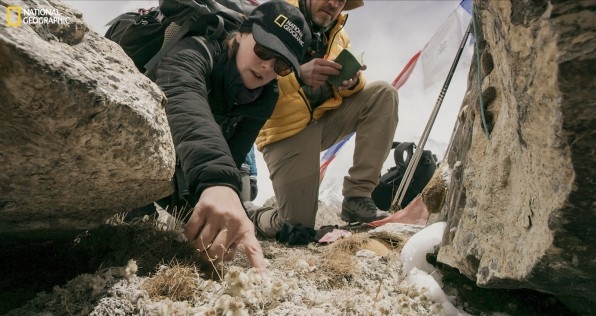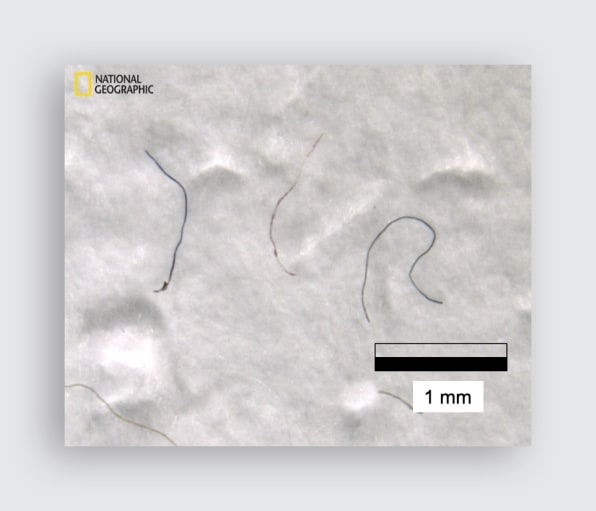
[Photo: Eric Daft/courtesy National Geographic/Rolex Perpetual Planet Everest Expedition]
Some of the plastic might have blown into the area by the wind, the same way that it has ended up in snow in other remote areas, like the Arctic. But much of it likely came from climbers, including tiny polyester and nylon fibers from “technical” clothing. “The highest concentration was found at Everest Base Camp, with 79 microplastics per liter,” says Imogen Napper, a National Geographic Explorer and scientist based at the U.K.’s University of Plymouth and the lead author of the new study, published in One Earth. “This is where trekkers and climbers spend a considerable amount of time.”

[Photo: Imogen Napper/courtesy National Geographic/Rolex Perpetual Planet Everest Expedition]
The impact of microplastics on human health and the environment aren’t yet well understood, though it’s possible that they can accumulate in tissue and cause health problems. Chemicals and other pollutants can also leach out of plastic. And like with microplastics in the ocean, there’s no easy way to remove them from snow or streams, especially in a challenging-to-reach location like the world’s highest mountain. “It doesn’t mean it’s impossible [to remove], but the best method is to stop the microplastic from getting there in the first place,” Napper says.
For the outdoor companies that make clothing and equipment like tents from plastic-based fabrics—but that cater to customers who often consider themselves environmentalists—plastic presents a challenge. When it’s washed, synthetic fabric tends to release huge numbers of microfibers; some are captured at wastewater treatment plants, while others escape into the environment. One recent study estimated that around 4,000 metric tons of plastic microfibers, or 13.3 quadrillion fibers, were released into the environment in California in 2019. More of the fibers can escape as people wear the clothing outside. In response, some companies, like Patagonia, are researching ways to design fabric differently or turn to other materials, like wool. Startups are working on new materials that can biodegrade, like fabric made from methane emissions.
“There are a lot of promising developments in industry at the moment,” says Napper. “We need to keep up the momentum, and ensure that such products are tested and evaluated before use. Solutions need to deliver a positive account, not create future issues. Plastic is a fantastic material, it is how we use and dispose of it that is an issue.”
(44)